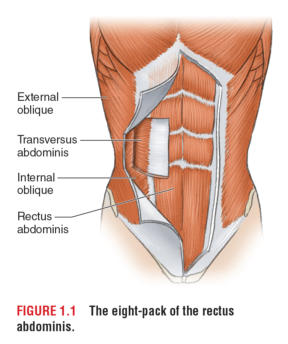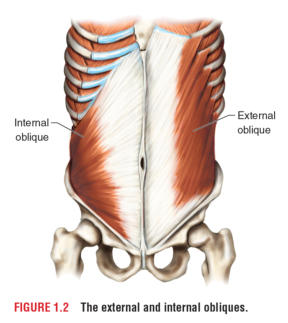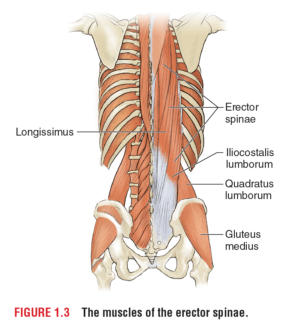Learn the anatomy of abs
This is an excerpt from Abs Revealed eBook by Jonathan Ross.
Anatomy of the Abdominals
The stars of the show are the main abdominal muscles: the rectus abdominis, the obliques (internal and external), and the transversus abdominis. However, in order to train more effectively, you need to make the distinction between the inner and outer abdominal muscles. As you review, remember this key concept: Outer muscles that are well developed and beautiful require inner muscles that are stable and capable. There's no point in putting on the world's greatest jacket if you're not going to wear a shirt underneath.
Outer Abdominal Muscles
The outer abdominal muscles include the rectus abdominis, the external obliques, the internal obliques, and the erector spinae. This entire series of muscles essentially surrounds the lower half of your torso and is, ideally, the most visible for great abs. These large abdominal muscles provide strength for movement and stability for preventing movement.
Rectus Abdominis
This outermost layer of abdominal muscle (see figure 1.1) makes up the six-pack and really serves as the tip of the iceberg when it comes to abdominal training. Everyone sees the six-pack, but the full story of the abdominals lies below the surface. The six-pack is actually an eight-pack, but you typically can't see the bottom two parts unless you are completely naked! The rectus abdominis is a long, thin muscle whose fibers run vertically down the body, beginning between the fifth and seventh ribs and ending at the pubic bone. It has eight bumps sticking out of a grid of flat tendons that bisect and run down the length of the muscle. This muscle flexes the trunk and moves the rib cage and pelvis closer together.

External Obliques
These muscles are visible, running diagonally from the ribs to the front of the pelvis (see figure 1.2) and the side of your eight-pack (rectus abdominis; refer to figure 1.1). Along with the internal obliques, they provide support and stability for the gut. Their action is to rotate your torso and to bend it sideways.
Internal Obliques
Although the depth of these muscles renders them invisible, they are no less important. They are one of the main stabilizers of your trunk. Like the external obliques, they lie on a diagonal, but they run in the opposite direction. They also rotate your torso. In torso rotation, motion is created by the internal obliques on the side you are turning toward and by the external obliques on the opposite side. As shown in figure 1.2, the fibers of the external oblique on one side lines up with the fibers of the internal oblique on the other side. For example, twisting to the left is a result of the actions of the internal obliques on the left and the external obliques on the right.

Use your hands to remember the alignment of these muscles. To trace the direction of the internal obliques, rest your hands on top of your lower ribs and then slide each hand down and around to your back pocket on the same side. To trace the direction of the external obliques, slide your hands down and in, moving from the lower ribs toward your belly button. For the internal obliques, your hands should move in toward your organs; for the external obliques, they should move out away from your organs.
Erector Spinae
The proper balance of strength and stability between the abdominal and back muscles makes for a truly well-built body. You can't have strong abs without a good back. The group of erector spinae muscles (see figure 1.3) is made up of the iliocostalis (top layer) and the longissimus (second layer). These back muscles run from the base of your skull, all the way down your spine, before finally connecting to the pelvis. You can feel these muscles in your lower back by locating the two vertical ridges that lie on either side of your spine. To find these ridges, stand up and bend slightly forward at the hips. If you feel only the bumps of the vertebrae in your spine, you are flexing too far forward. To straighten your spine, bend from your hips instead of your waist. These two layers of back muscles round out your cast of outer abdominal players.

SHOP

Get the latest insights with regular newsletters, plus periodic product information and special insider offers.
JOIN NOW


